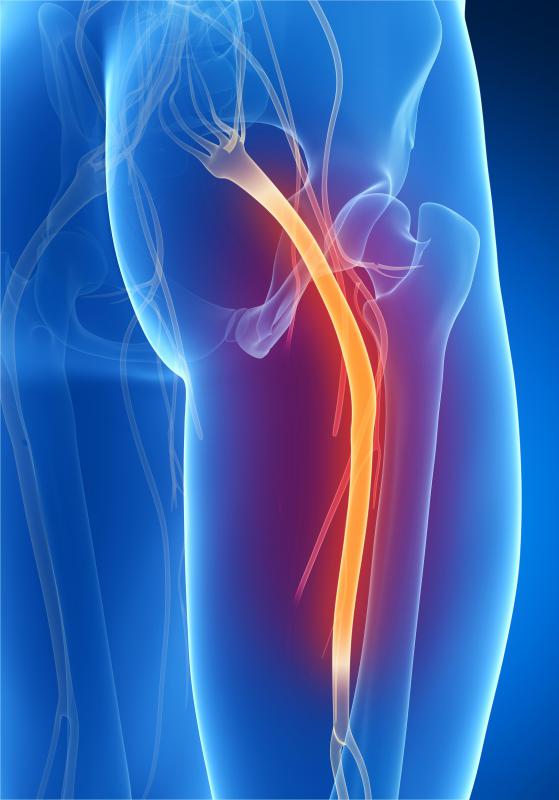At WiseGEEK, we're committed to delivering accurate, trustworthy information. Our expert-authored content is rigorously fact-checked and sourced from credible authorities. Discover how we uphold the highest standards in providing you with reliable knowledge.
What are the Different Types of Piriformis Syndrome Exercises?
Piriformis syndrome occurs when sports activity causes piriformis muscle spasms, tightness, irritation to the sciatic nerve, back pain, thigh pain, buttock pain, numbness, or tingling. There are piriformis exercises that can be done to counteract the pains that accompany piriformis syndrome. For example, the piriformis long sit, the stretched IT band and supine hips rotation exercise, the stretch hip and knee exercise, and the stretch piriformis and supine cross leg exercise can all be helpful piriformis syndrome exercises.
The piriformis long sit involves sitting with the right knee in a bent position with the right ankle placed to the outside of the left leg. Grasp the knee while pulling the thigh across the chest toward the left shoulder. Repeat the same process with the left leg. Do one set of ten repetitions preferably twice per day.

There is the stretched IT band and supine hips rotation exercise which involves lying on the back with the knees bent. Lift the right leg and put it over the left knee. Use the right leg and pull down the left leg. Do the same thing with the other leg and hold for ten seconds. Preferably do one set of ten repetitions twice per day.
The stretch hip and knee exercise involves lying on the back with the knees bent and then moving the left ankle and put it over the right knee. Then lift the right knee to the chest and feel a gentle stretch. Hold for ten seconds then do the same motion with the other leg. Preferably do one set of ten repetitions twice per day.

Stretch piriformis and supine cross leg exercises involve lying on the back with the right knee being bent and the right ankle crossing the left leg. Then put the right hand onto the hip, grab the knee, and then pull the thigh inward and simultaneously attempt to move the right knee in an inward direction. There should be a stretch felt on the right side of the buttocks. Hold for ten seconds and repeat this process with the other leg. Do ten repetitions twice per day.

The above piriformis syndrome exercises are not the only exercises that can be done. For example, there are additional piriformis syndrome exercises that involve the use of an elastic band. Patients should talk to their doctor before attempting those piriformis syndrome exercises or any other. The above exercises, however, are convenient to do and can be done at any time without any kind of elastic band or other equipment.
AS FEATURED ON:
AS FEATURED ON:














Discussion Comments
My favorite exercises to do to ease piriformis muscle syndrome are leg lunges. They stretch and strengthen muscles that are prone to spasms, which decreases the likelihood that these sensations will worsen.
I have found that taking a long, brisk walk also helps to calm the muscle spasms that occur with piriformis muscle syndrome. It seems to relax the muscles, and reduces spasms.
Post your comments